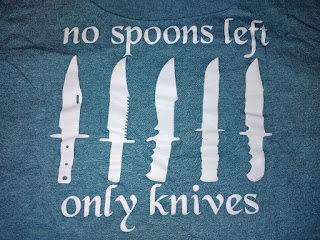Prolotherapy: Treatment Two

This post is much more delayed than I had planned for a couple of reasons - it all boils down to I didn't feel up to it though. The day after my second Prolo treatment I had an appointment with my PCP who was concerned that I was showing symptoms of Serotonin Syndrome and had me titrate off the migraine preventative I was on. While I'm happy to report that the negative side effects I was experiencing have stopped, unfortunately I've had a migraine for all but one of the last 11 days, my pain levels have been much increased, and my fatigue is bad. I've spent the bulk of every day in bed and I haven't been able to do much at all. How much of this is what Prolo would have looked like if I wasn't on the meds the first round and how much is a result of coming off them? I don't know. Maybe we'll find out next round. So, like the first round, my worst day was the fifth day after treatment. U...





